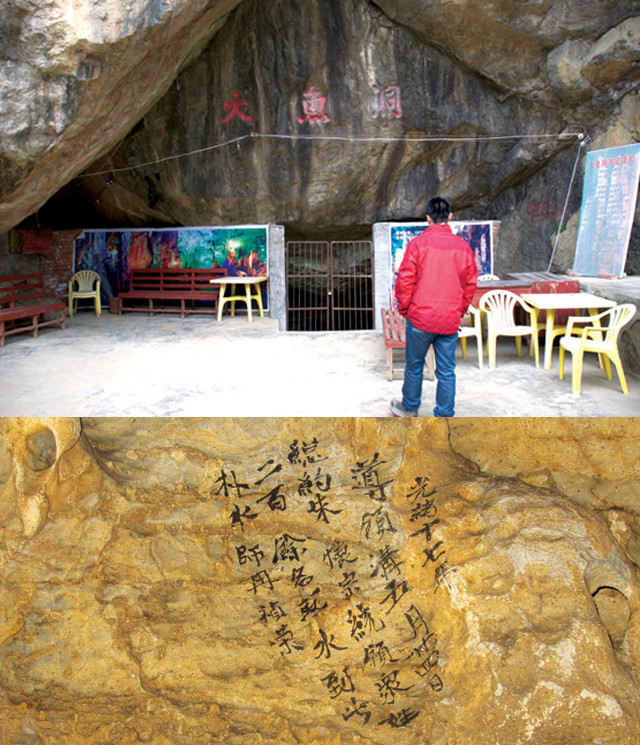
by Mary Caperton Morton Thursday, November 12, 2015

An inscription from 1891 found in Dayu Cave (entrance shown above). Credit: both: L. Tan.
In times of drought, Dayu Cave in the Qinling Mountains of central China has remained a reliable source of water, and since at least the 16th century, thirsty visitors to the cave recorded their pilgrimages on the walls. Now the graffiti — rendered in black pigment on the yellow cave walls — is providing scientists with a unique record of how climate change affected nearby communities between 1520 and 1920.
The climate of the Qinling Mountains is governed by summer monsoons, which drop more than 70 percent of the year’s rain in a few months. In years that the monsoon comes early or late, or has a shorter-than-average duration, the region can suffer extreme drought. About 10 percent of the inscriptions on the walls of the cave refer to water shortages, shedding light on at least seven episodes of drought over the 400-year period.
According to a new analysis of the cave graffiti published in Scientific Reports, one such inscription, dated to 1891, reads: “On May 24th, 17th year of the Emperor Guangxu period, Qing Dynasty, the local mayor, Huaizong Zhu led more than 200 people into the cave to get water. A fortune-teller named Zhenrong Ran prayed for rain during the ceremony.”
To verify the periods of drought, a team led by Liangcheng Tan of the Chinese Academy of Sciences sampled speleothems and analyzed them for drought markers recorded by the isotopes and trace elements preserved in the rocks. They found that variations in oxygen and carbon isotopic ratios were well-correlated to the time periods of drought recorded on the cave walls.
“Since the Qinling Mountains are the main recharge area of two larger water transfer projects, and the habitat for many endangered species, including the iconic giant panda, it is imperative to explore how the region can adapt to declining rain levels or drought,” said co-author Sebastian Breitenbach of the University of Cambridge in England, in a statement. “Things in the world are different from when these cave inscriptions were written, but we’re still vulnerable to these [drought] events — especially in the developing world.”
© 2008-2021. All rights reserved. Any copying, redistribution or retransmission of any of the contents of this service without the expressed written permission of the American Geosciences Institute is expressly prohibited. Click here for all copyright requests.